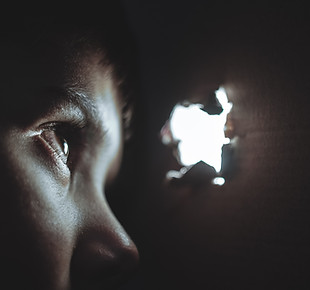Paraphilias & Sex Offending Behavior



What is it?
Paraphilic Disorder: By simple definition, "paraphilic disorder" is a sexual act and/or attraction that is against the cultural norm that causes distress or impairment to the individual or harm to others (and not only because of the culture disapproving of the attraction).
Paraphilia is the word used to describe the specific sexual attraction to those things that are nonsexual objects (e.g., shoes, cars, etc.), causes suffering or humiliation, and/or involve non-consenting partners (e.g., children, animals, disabled/incapacitated people, corpses, etc.).
Within the DSM-5 category, this group of disorders includes:
-Voyeurism: sexual arousal to watching someone in the state of undress, naked, or in the act of sexual activity without them knowing and/or permission to view them;
-Exhibitionism: sexual arousal to showing/flashing your genitals to an unsuspecting person without their permission;
-Frotteurism: sexual arousal to rubbing your genitals against someone without their permission, possibly to the point of ejaculation or orgasm;
-Pedophilic disorder: being sexually attracted to pre-pubescent [not showing signs of puberty] children under the age of 13, whether or not having acted on this attraction);
-Sexual masochism disorder: sexually aroused to being humiliated, beaten, bound, or otherwise made to suffer;
-Sexual sadism disorder: sexual arousal to the physical or psychological suffering of another person; ---Hebephilia (not formally classified in the DSM-V): sexual attraction to pubescent children [between the ages of 13 and 15 years old, whom are showing early signs of puberty].
Sex Offending Behavior is a simple way of describing those actions a person has taken to act out their attraction to, often, a paraphilia. It is vital to point out that just because a person may meet criteria for having paraphilic sexual attractions, does NOT mean they will automatically act on them! For those who have, their actions would fall within this category. For example, there are many people who are sexually attracted to prepubescent children (pedophiles) but DO NOT and WILL NOT act on these attractions, as they understand the harm this causes.



How do we treat it?
Your therapist is committed to providing you with the utmost compassionate care, which includes a heavy focus on the privacy of your presenting concern and they will work with you to understand your paraphilia(s) and how they impact your sexual self, expression, and how to help you to not act on these urges and/or desires to keep yourself, and the community, safer (if applicable). Understanding the paraphilias and working toward prevention of acting on them does not mean your therapist automatically assumes you WILL act on these attractions! However, just as it is important to know what causes a person depression or anxiety, for the sake of managing and learning to live with those symptoms, knowing what your attractions mean to you and your beliefs about your sexual expression can help to determine ways to have safer sexual expression. The therapists at Obsidian Counseling strongly believe in the World Health Organization's (WHO) definition of sexual health and not acting on paraphilias in certain ways would help a person achieve that: “…a state of physical, emotional, mental and social well-being in relation to sexuality; it is not merely the absence of disease, dysfunction or infirmity. Sexual health requires a positive and respectful approach to sexuality and sexual relationships, as well as the possibility of having pleasurable and safe sexual experiences, free of coercion, discrimination and violence. For sexual health to be attained and maintained, the sexual rights of all persons must be respected, protected and fulfilled.” (WHO, 2006a)
